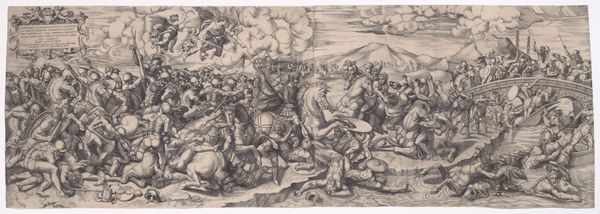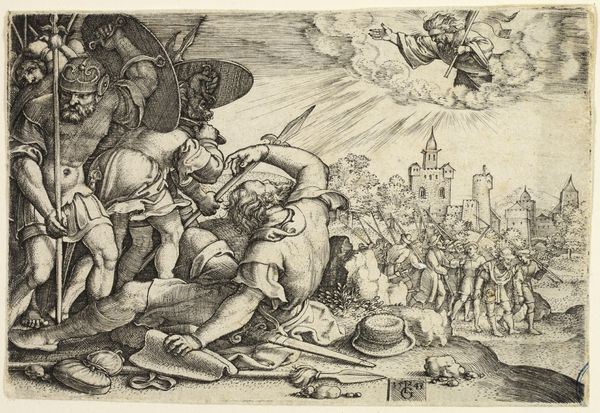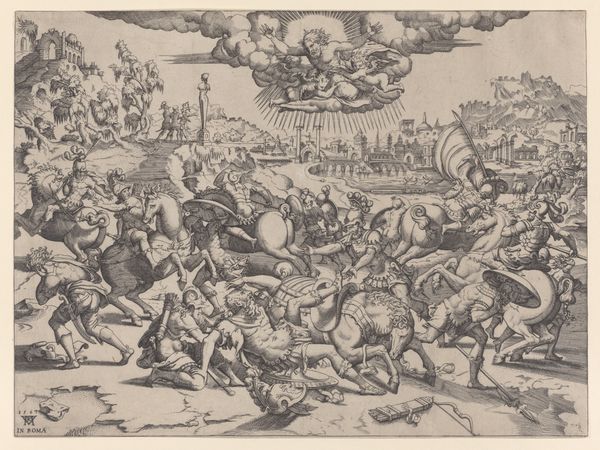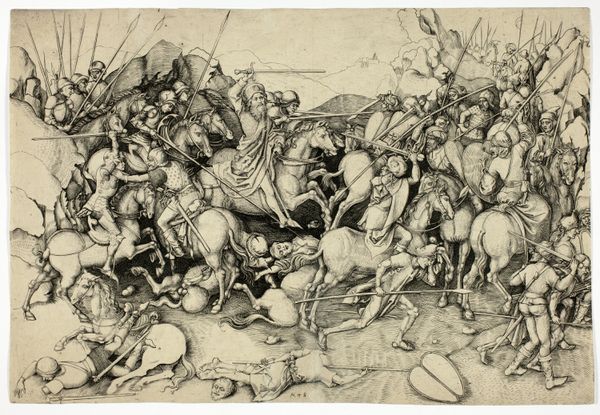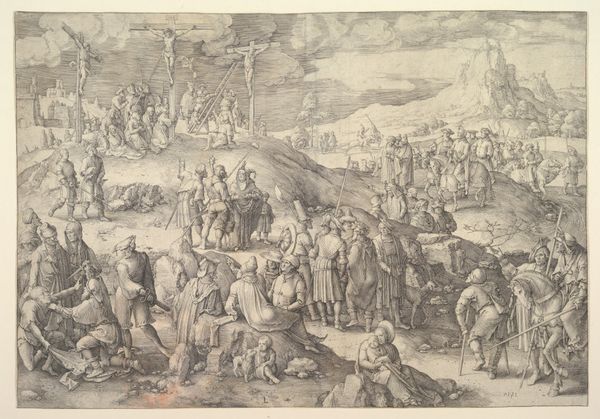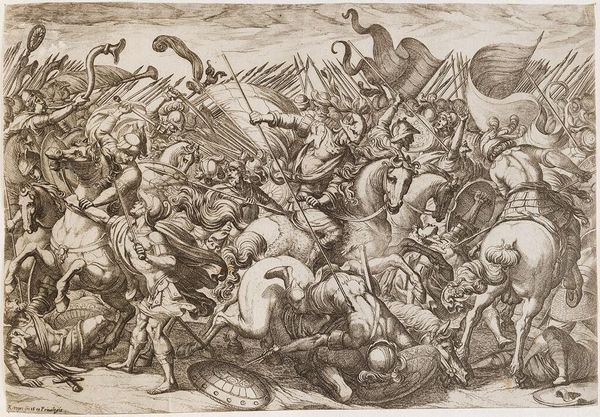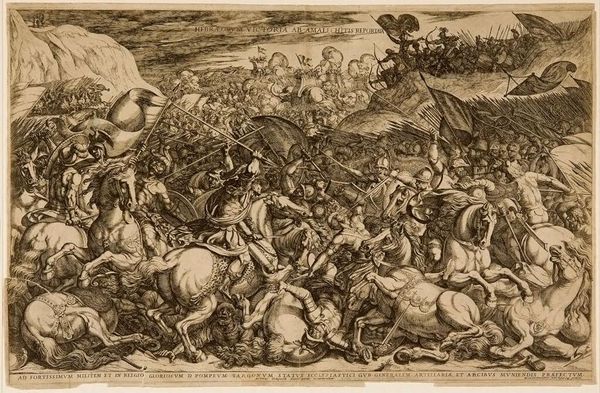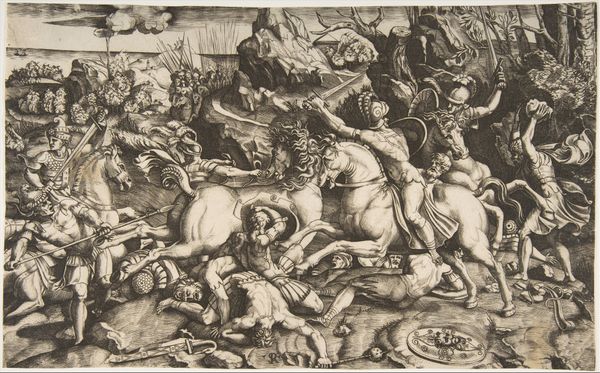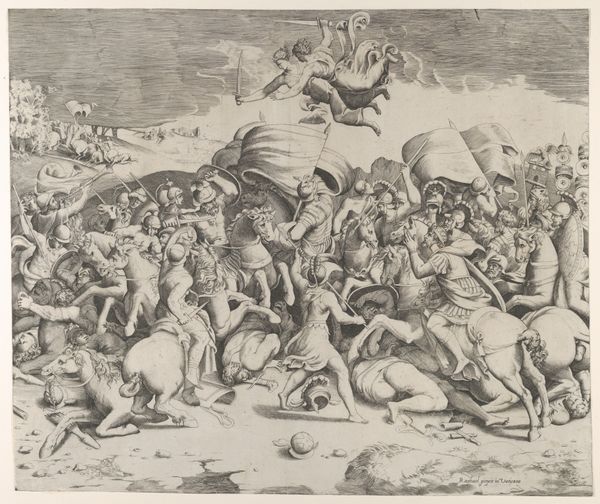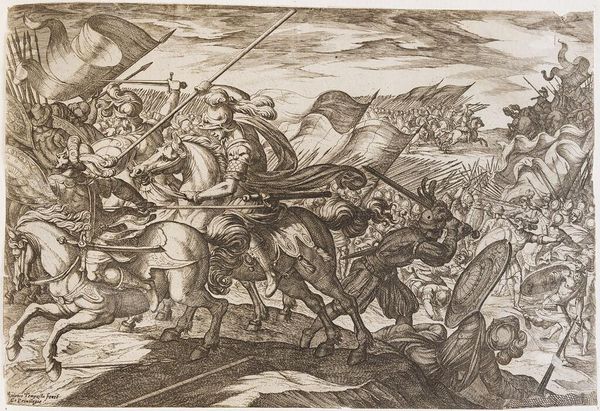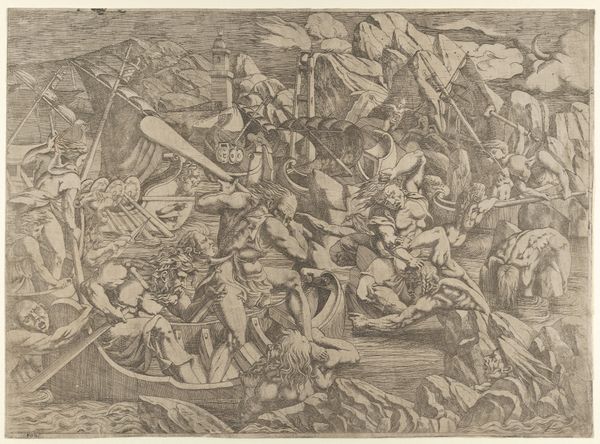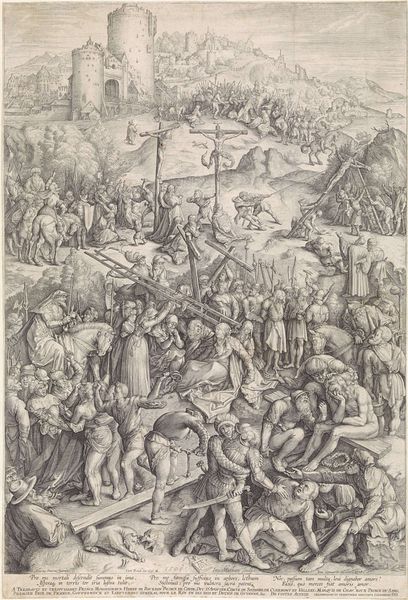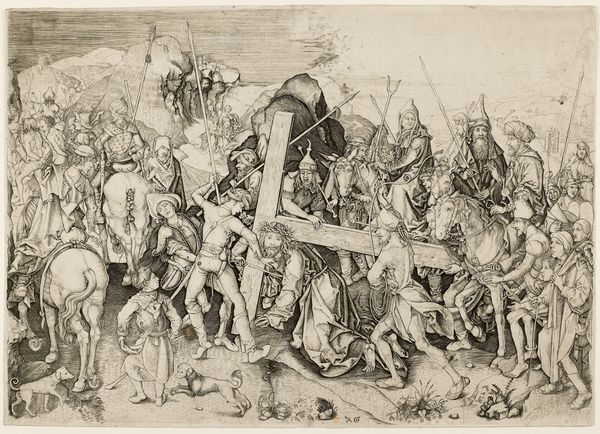
painting, oil-paint
#
allegory
#
narrative-art
#
painting
#
oil-paint
#
landscape
#
fantasy-art
#
mannerism
#
figuration
#
handmade artwork painting
#
underpainting
#
mythology
#
painting painterly
#
history-painting
Copyright: Public domain
Editor: Here we have Pieter Brueghel the Younger's "The Temptation of Saint Anthony," painted around 1600. It's oil on… well, something, probably wood. It feels so crowded and chaotic, almost like a Bosch painting. How do you interpret this work? Curator: It is tempting to simply place this within the traditions of Bosch given the fantastic and grotesque imagery. But, let’s consider what this scene signifies culturally. Saint Anthony's trials speak to broader anxieties surrounding faith, desire, and societal order. The abundance of bizarre creatures symbolizes external and internal temptations. How do you think that relates to anxieties of Brueghel's time? Editor: I see it a little, with the reformation brewing... maybe these monsters represent heresy or challenges to the Church? It does feel like there’s a political undercurrent here. Curator: Precisely! These monstrous figures challenge societal norms. What do you make of Saint Anthony being surrounded by all these tempting, often female, figures? Editor: Are you saying there’s something about gender in the power dynamic represented? Are the women literally embodiments of "temptation," which says more about societal fears around women and female sexuality? Curator: Exactly! Consider how interpretations of gender roles and sexuality intersect with religious doctrine during that era. Brueghel, or rather, his father's visual language—adopted here by his son—highlights those tensions. What else stands out to you regarding the painting's politics and its figures of excess and disruption? Editor: Seeing it through that lens helps clarify what Brueghel the Younger was commenting on; this piece visualizes not just temptation but power struggles as a whole. Thanks! Curator: It’s in that struggle, and art's capability to reflect and reframe our understanding of it, that we find its lasting relevance.
Comments
No comments
Be the first to comment and join the conversation on the ultimate creative platform.
